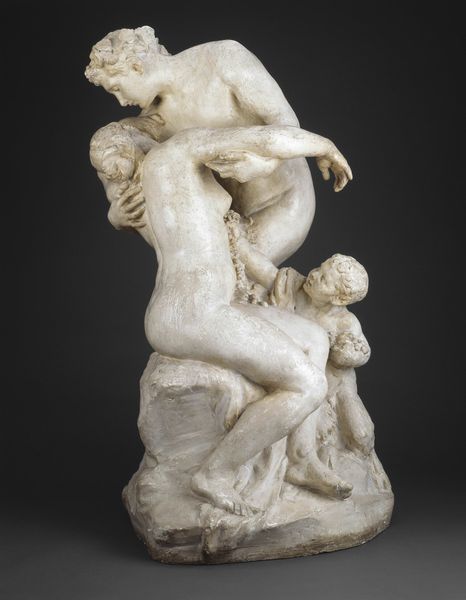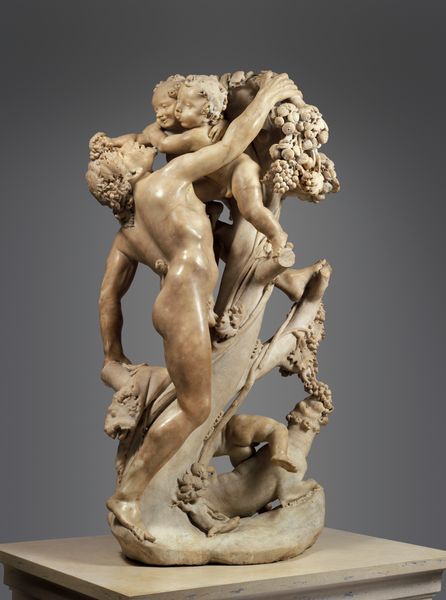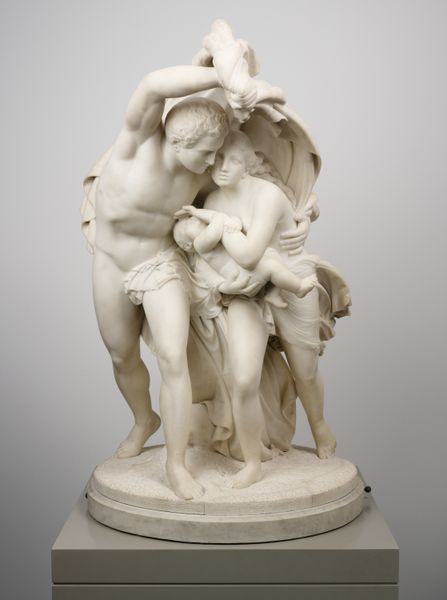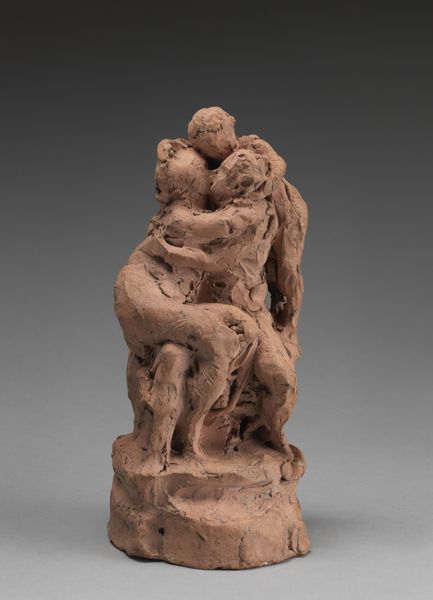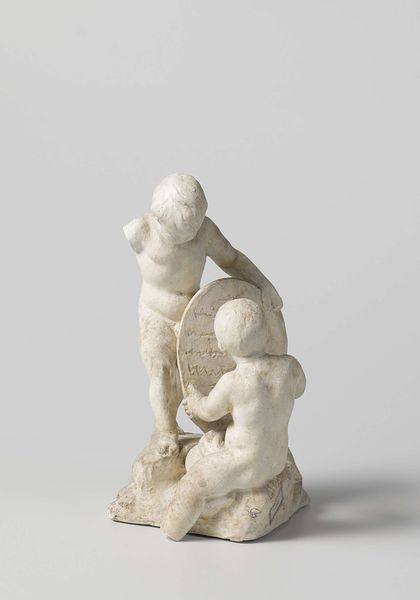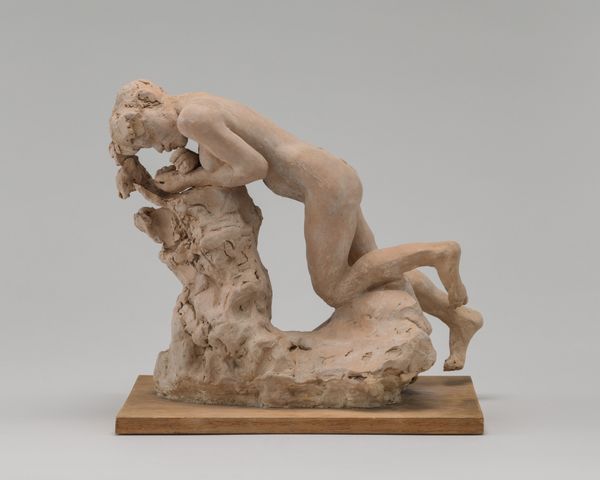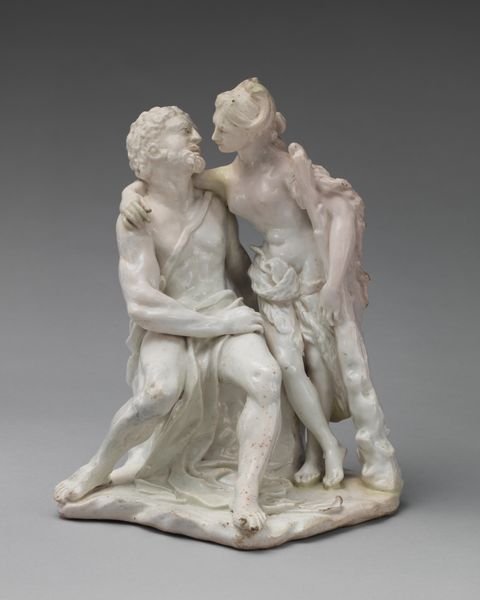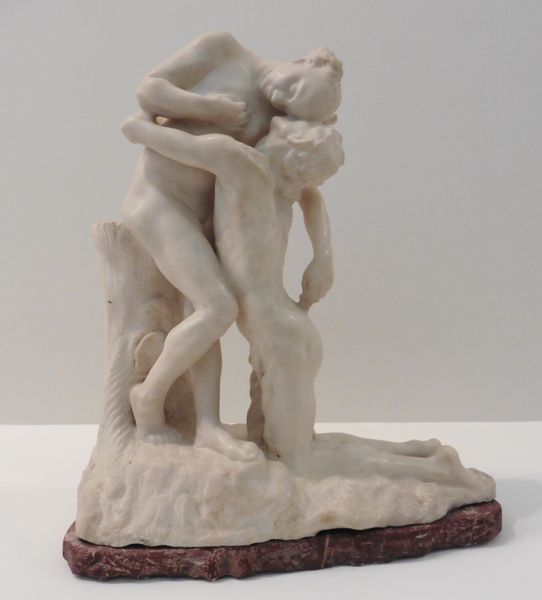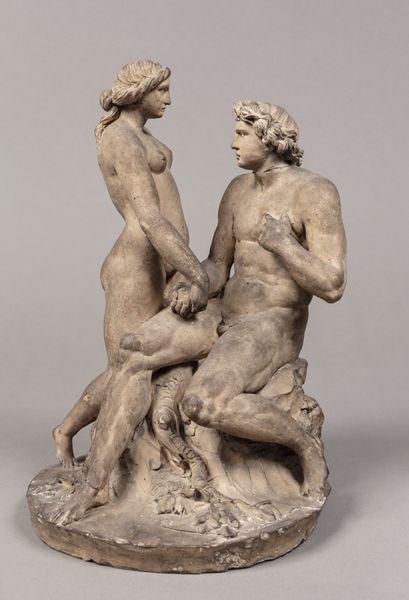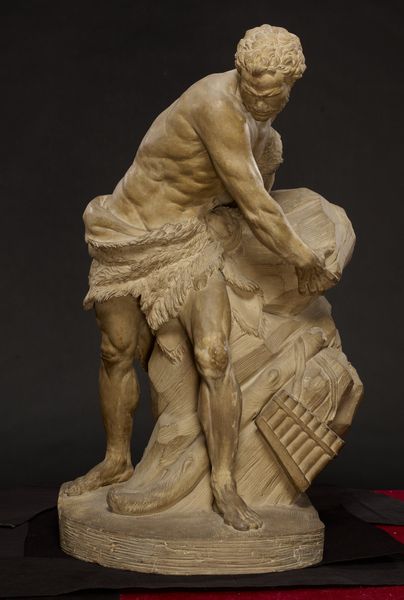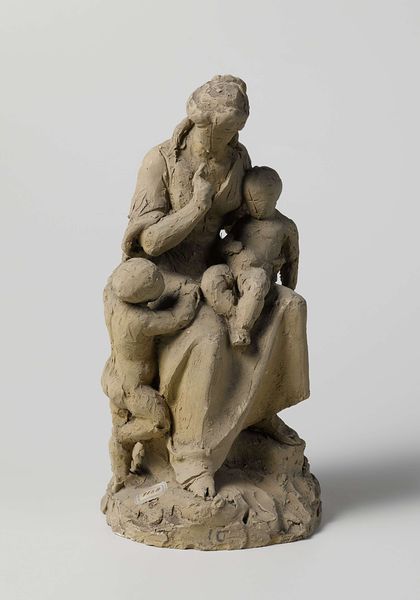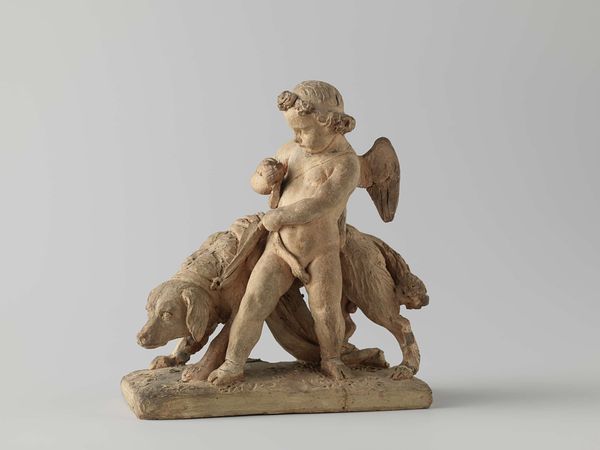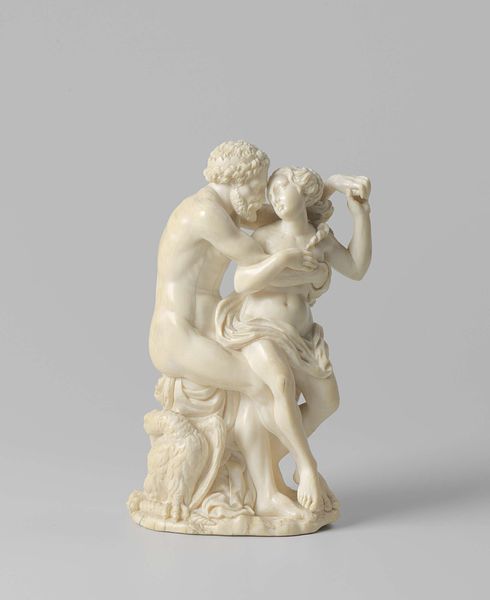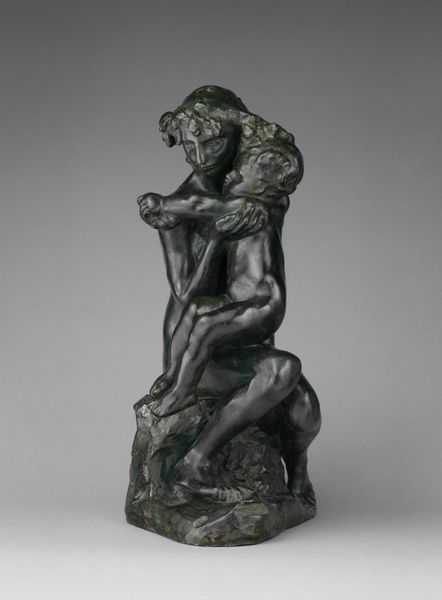
bronze, sculpture
#
sculpture
#
classical-realism
#
bronze
#
figuration
#
sculpture
#
history-painting
#
academic-art
Dimensions: height 38.5 cm, diameter 15.5 cm, width 9.9 cm
Copyright: Rijks Museum: Open Domain
Curator: Well, look at this. What springs to mind when you first see Eugène Lacomblé's bronze sculpture, "Hercules and Antaeus" from 1877? Editor: Honestly? Immediate awkwardness. That close embrace, the almost unsettlingly tender hold, but also... a sense of strained power. Like a lover's quarrel, but with world-ending consequences? Curator: It's an intriguing tension, isn't it? Lacomblé’s sculpture captures a pivotal moment rooted in classical mythology: Hercules' battle with Antaeus. Crucially, Antaeus was invincible so long as he maintained contact with the Earth, his mother, Gaia. Editor: Ah, right! That adds a layer, a desperate cling. You can almost feel the earth beneath Antaeus's feet—the sculpture practically vibrates with his frantic energy as he fights to stay grounded. Makes you think about dependency, what anchors us. And Hercules, he looks so determined! Curator: Indeed. The narrative speaks to the complex dynamics of power and dependence. It explores how dominance can arise through strategic detachment, cutting off another’s source of strength. The choice to render it in bronze firmly places the work within established traditions of heroic statuary while questioning inherent assumptions about who gets to be a hero, and on whose terms. Editor: Totally. And the slightly rough texture of the bronze, it avoids the idealized smoothness often found in academic art. There's a rawness to their struggle, both physical and existential. The sculpture also plays with contrasts... Hercules's almost casual pose versus Antaeus's panicked grip, highlighting themes of control and loss. Curator: Exactly! The material and composition reinforce an intersectional reading that scrutinizes power dynamics within gendered and political systems. In the 19th century, such works played into larger cultural debates about imperialism, natural resources, and exploitation. Editor: Well, I see it now! That simple embrace turns into something deeply unnerving—a potent reminder of the battles we wage for connection and dominance, whether with the earth, with each other, or within ourselves. Curator: Indeed. It's a layered representation that compels us to contemplate enduring narratives. Editor: Food for thought. Let’s move on and find some more hidden gems in this place.
Comments
No comments
Be the first to comment and join the conversation on the ultimate creative platform.
